Scott Creighton builds on evidence offered in The Great Pyramid Hoax, causing the conventional explanation for the origin of the Great Pyramid to seem all the more untenable.
In 1765 the British consul to Algiers, Nathaniel Davison, discovered a hidden chamber directly above the King’s Chamber of the Great Pyramid of Giza. He gained entry via a precarious climb using a rickety ladder at the south end of the pyramid’s Grand Gallery. It seems that the passage leading to this chamber had been accessible since the pyramid’s construction. The chamber’s dimensions were similar to those of the King’s Chamber directly below, although unlike the King’s Chamber, the compartment Davison discovered was very cramped, being only around three feet in height. As Davison explored, he found nothing but a floor several feet deep in bat dung—no hidden sarcophagus, no treasure and, as in the rest of the pyramid, not a single inscription. Little did Davison know that directly above the chamber which now bears his name, a further four chambers awaited discovery.
Seventy-two years after Davison’s discovery, British adventurer Colonel Richard William Howard Vyse, following the intuition of his colleague, Giovanni Caviglia, blasted his way into the four hidden compartments above Davison’s Chamber (Figure 1) using gunpowder. These four chambers, known today as the ‘Chambers of Construction’, were approximately the same size as Davison’s. However, in one very important way they were different; for upon the wall and roof blocks of these ‘Vyse Chambers’ were many painted inscriptions and, significantly, the name of the pyramid’s supposed builder, Khufu.
The importance of these painted marks to Egyptology cannot be overstated. They are Egyptology’s ‘Holy Grail’, because they offer the only empirical evidence that directly connects Khufu to the Great Pyramid. As Egyptologist Dr Mark Lehner writes:
“Since nobody had entered from the time Khufu’s workmen sealed it until Vyse blasted his way in, the gang names clinch the attribution of this pyramid to the 4th-dynasty pharaoh, Khufu.”1
However, from the moment Colonel Vyse first presented these painted ‘quarry marks’ to the world, questions have surrounded them and suspicions have grown—particularly surrounding the king’s various names and whether they were fraudulently placed into the four chambers by Vyse and two of his closest assistants, Raven and Hill, or not.
Indeed, the more we analyse the painted inscriptions from the ‘Vyse Chambers’, the more errors and anomalies we find in them. Taken together, the evidence points towards the perpetration of an audacious hoax in the Great Pyramid by these men in 1837.
Let us now consider two pieces of this considerable body of evidence.
Odd Numbers
Early hieratic letters and numerals essentially consisted of cursively written or painted equivalents of the sculpted hieroglyphic signs.2 As such, their early orthography was not so far removed from their counterpart sculpted signs. However, as the millennia passed, the two forms diverged greatly from one another.3
One of the key differences between early hieratic script and their sculpted hieroglyphic equivalents is that hieratic script (like that allegedly discovered in the ‘Vyse Chambers’) was always and only written (and read) from right-to-left, whereas hieroglyphics are bi-directional.4 Both forms are also read from top-to-bottom.5
In 1837, hieratic script was barely understood by the Western world, and as the evidence reproduced in this article suggests, Vyse did not understand it either. Indeed, it seems that Vyse regarded the script in these chambers as painted hieroglyphic rather than hieratic quarry-marks, and that this misunderstanding caused Vyse to make a grave error in the placing of these hieratic numbers onto the roof blocks in Campbell’s Chamber.
The painted marks in these chambers appear in a variety of orientations from their natural upright positioning. The conventional explanation for this apparent haphazard arrangement is that, originally, the marks would have been painted onto each block at the quarry in the natural upright manner.6 The builders of the chambers, unconcerned about the orientation of the painted marks on the blocks, would have then rotated each block (with it signs) to find the most efficient means of placing it within the various chamber walls.7 (Figure 2a-b).
The way that these signs appear on the roof blocks of Campbell’s Chamber is inconsistent with the grammatical rules of hieratic script. In hieratic script, a vertical stroke ‘|’ symbolizes 1 unit while a ‘∩’ sign symbolizes the value 10, thus ‘| | ∩’ = 12 and ‘| | | ∩ ∩’ = 23 and so on.8 Note also that in hieratic script the highest numerical value is always placed to the right of the lower values.9 This ensures that the higher value is always read first, i.e. from right-to-left. It is here that Vyse seems to have made a mistake.
If we rotate the painted numbers on these blocks to their natural upright position—so that they are presented as they would have “appeared at the quarry” (vis-à-vis the conventional explanation for their orientation)—then the lower unit strokes ‘| |’ end up on the right and the higher ∩ value on the left. This means that the signs cannot have been drawn on at the quarry and then rotated, unless drawn on incorrectly:
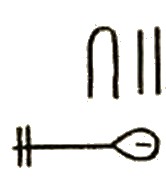
Figure 3. Rotating the signs so that they appear as they would have “at the quarry” (vis-à-vis the conventional explanation) suggests that this value on the roof block of Campbell’s Chamber has been incorrectly written with the higher value on the left instead of to the right.
Clearly, something here isn’t right. To offer an explanation consistent with the rules of Hieratic script, critics have proposed that these numbers were perhaps written sideways onto these blocks at the quarry (Figure 4), from top to bottom.10 Oriented in this way, the 90º rotated number signs will then have the higher unit values (∩) correctly placed above the lower unit values (| |) and are thus read first, top-down.
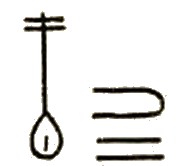
Figure 4: The hieratic sign for ‘12’ rotated 90º (sideways) so that the highest numerical value is read first (from top-to-bottom).
However, while the ancient Egyptians did indeed write certain hieratic numbers sideways in a style similar to that presented in Figure 4, this was only ever done when writing the calendar days of the month as observed in Figures 5a, 5b and 5c.

Figure 5a. Hieratic script showing regnal year 16 (with solar disc) and 1st month with upright numerals (and solar disc) but only with ‘day 13’ numerals rotated ninety degrees (sideways).11

Figure 5b. The Wadi al-Jarf papyri with Hieratic script showing calendar day numerals 22-25 (with solar disc above), rotated ninety degrees (sideways).
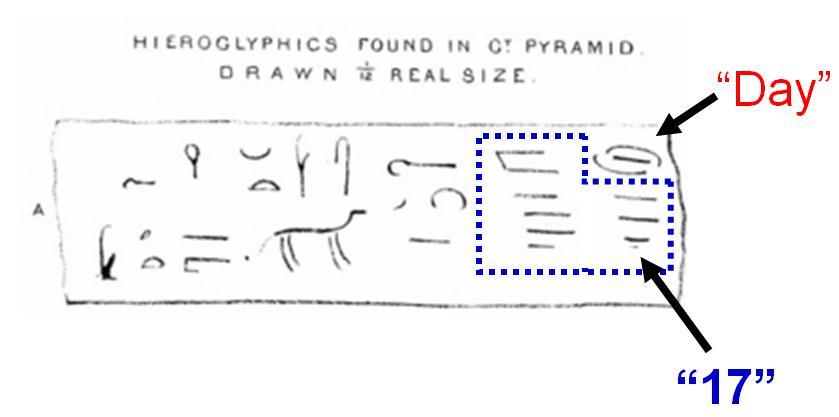
Figure 5c. Date signs in the pyramid of Neferirkare at Abusir. Again we see that the sideways number signs (in blue box) are accompanied with the hieratic solar disc sign (‘day’).12
This convention is confirmed by Egyptian language expert, Sir Alan Gardiner, who writes:
“In Hieratic the tens and units, when referring to the days of the month, are invariably laid on their side… Traces of a similar use, though as regards the units only, are sometimes found in Middle Kingdom hieroglyphic…” 13
Gardiner’s comment is consistent with the Old Hieratic palaeographic record. Here we find that the ancient Egyptians used unit and ten number signs rotated 90 degrees from their upright/vertical orientations to represent the days of the month.14 We also observe, as Gardiner states, that unit number values (1-9) were written sideways/horizontally in later periods. However, on no occasion in the Old Hieratic palaeographic record do we find a cardinal number ∩ rotated 90 degrees from upright that is not a date.15
Given the total absence of the solar disc sign from all of the number signs in Campbell’s Chamber (Figure 5d), it is highly unlikely that these signs represent calendar days, as some have suggested.16 As such, these signs should not be read sideways (from the top-down) but upright (from right-to-left). And since ancient Egyptian scribes were unlikely to write the cardinal number ∩ upright with the lower unit values placed on the right, then the number signs in this chamber are clearly anomalous.

Figure 5d. Hieratic numbers painted onto the roof blocks of Campbell’s Chamber. None of these numbers show any evidence of the solar disc sign that would indicate the numbers were to be read sideways, as dates.
What we are therefore likely witnessing here is the work of someone who did not understand that ancient Egyptian hieratic script, unlike hieroglyphics, can only be read from right to left. That genuine hieratic numbers were simply flipped and painted onto these blocks to make them look as though painted onto the block at the quarry, is one simple way of explaining this anomaly (Figure 6).
The Lost Symbol
Another piece of evidence that points to the committal of fraud in the Great Pyramid in 1837 concerns a small group of signs on a wall block in Lady Arbuthnot’s Chamber. In this instance, we must first understand what, from the perspective of Colonel Vyse, occurred when this chamber was first opened, and shortly thereafter:
“…The chamber above Nelson’s (afterwards called Lady Arbuthnot’s) was opened, and in the course of the afternoon I entered it with Mr. Raven… Lady Arbuthnot’s Chamber was minutely examined, and found to contain a great many quarry-marks. Notwithstanding that the characters in these chambers were surveyed by Mr. Perring upon a reduced scale, I considered that facsimiles in their original size would be desirable, as they were of great importance from their situation, and probably the most antient inscriptions in existence. I requested, therefore, Mr. Hill to copy them…” 17
Here we learn that Vyse first entered the chamber only with Raven, before commissioning Perring to undertake a plan survey of the painted marks he allegedly found there. We also learn that Hill was asked to make 1:1 facsimile drawings of the marks.
In the course of his survey of Lady Arbuthnot’s Chamber, Perring copied the following marks from one of the wall blocks:

Figure 7. Impression of the marks copied by Perring from Lady Arbuthnot’s Chamber. Note that the sign on the 2nd row, furthest right, is the only sign in this group of marks that is upside-down.
As explained earlier, each individual sign within a group of signs on a particular wall block within the ‘Vyse Chamber’ bears the same orientation whether that be upright, upside-down or sideways.18 However, the symbol included in Figure 7 demonstrates something quite unique—all of the symbols on the two rows of the script on this block are upright with the exception of one: the very last symbol on the second row is, bizarrely, upside-down.19
This is not something we would expect an ancient Egyptian scribe to have written, especially given that this upside-down sign on this wall block is not actually necessary for this particular inscription. The first five signs are believed to represent the name of a work gang: ‘The gang, Pure Ones [of the] Horus Medjedu’.20 The sign for ‘gang’ in this inscription is crudely written upright on the second row (far left).21 This means that the upside-down sign on the same row (far right), which also means ‘gang’, is anomalous and superfluous to this inscription.
But what is even more peculiar about the inscription on this particular block is Hill’s 1:1 facsimile drawing of it; a drawing which Hill would have made within a day or even within hours of Perring’s drawing of the same marks: 22
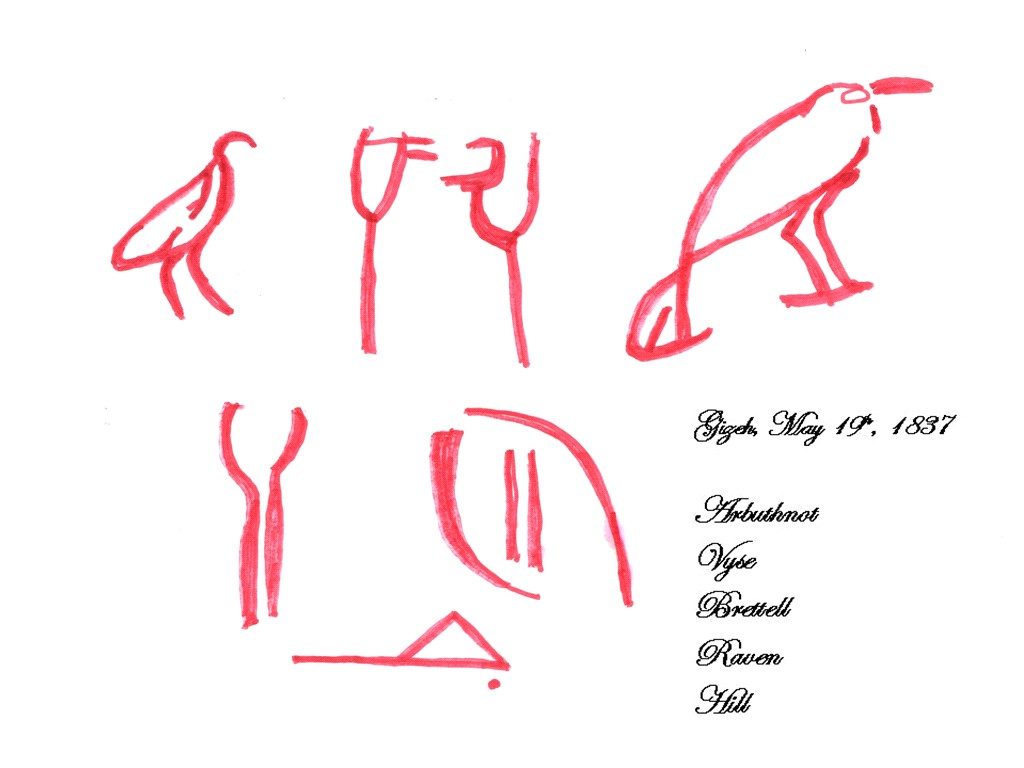
Figure 8: Impression of Hill’s facsimile copy of the marks from the same block as Perring’s. Note the five witness names signed on the drawing.
There are a number of differences between the drawings made by Perring and Hill of the marks on this block, but the most significant difference is that the bizarre upside-down sign we observe in Perring’s drawing is entirely missing from Hill’s and in its place are five witness signatures (Figure 8).
What happened to it?
This particular symbol is a well-known and well-documented, bona-fide ancient Egyptian hieratic sign, and it is produced with the same upside-down orientation a number of times elsewhere in the ‘Vyse Chambers’.23
Suspicions arise
First, we are expected to believe that Perring copied a well-documented sign upside-down on the block, which is superfluous to the inscription and entirely out of place among the other upright signs on the block. Then, we are expected to accept that by the time Hill came to copy the anomalous symbol, it had vanished.
Furthermore, two weeks later, on 19th May 1837, Vyse arranged for no less than five witnesses to attest to the accuracy of Hill’s facsimile drawings against the block marks in the chambers.24 Notably, Mr Perring was not among these five witnesses.25
What are the chances that the most anomalous symbol painted in these chambers just also happens to be the only symbol to have mysteriously vanished from the inscription? What could have caused it to disappear like this?
Could it be that someone realised this mistake—this mismatch of sign orientations on this wall block— and had the sign removed from the block before Hill made his copy of it, but not before Perring had made his copy of these marks?
Critics of the fraud theory try to explain this anomaly away. First, it is suggested that poor lighting conditions (candle or oil lamp) may have resulted in Perring copying a symbol that wasn’t on the block.26 This explanation is highly improbable; if this were true, we would likely find other significant inconsistencies between the work of Perring and Hill, and we don’t.
Perring would have spent a fair bit of time observing and copying these marks; it is one thing to miss a small detail that does exist, but quite another to observe and copy something that simply doesn’t exist. Moreover, if Perring did somehow copy a non-existent sign, it is highly unlikely that it would be meaningful (i.e. an understood, bona-fide hieratic symbol) as opposed to unrecognisable squiggles that poor lighting could produce.
Critics of the fraud theory also point out that we do not have Perring’s original drawings, but only the lithographer’s rendition of Perring’s original artwork. 27 It is hence inferred that a mistake was made at some point during the production of the lithographic block used to impress these drawings.28
Once again, this objection does not stand up to scrutiny. The lithographic blocks would have been made in reference to Perring’s original artwork. It is the lithographer’s job to ensure an accurate lithograph is made from the original artwork. These lithographs (usually made of stone, hence ‘litho’) were not easy to make; the artwork would have been scrupulously referred to as each sign on the stone was cut and shaped.
Is it reasonable to expect that the lithographer could have made such an obvious mistake? And if they did make a mistake, would they have done so by including a symbol that wasn’t in Perring’s artwork?
Finally, the lithographs were for Perring’s book (as well as Vyse’s).29 As such, standard publishing practice will have ensured that proof copies were made and crucially, that they were approved by Perring before his book was published. It is inconceivable that this proof-checking would not have taken place.
If we accept that Perring made an accurate copy of what he observed in Lady Arbuthnot’s Chamber, then the disappearance of the anomalous symbol sets alarm bells ringing. There is seemingly no rational way to explain this disappearance other than to suggest that this erroneous symbol, this obvious mistake, was purposely removed from the block upon being realised—but, unfortunately for the forgers, as the evidence suggests, not before Perring had made his copy of it. This explains why Perring was apparently not invited to witness Hill’s drawings—he could have pointed out this glaring inconsistency.30
The deeper we investigate the marks in the ‘Vyse Chamber’, the more anomalies seem to arise. Egyptology can continue to ignore the considerable body of evidence that points to the perpetration of fraud in these chambers by Vyse and his team in 1837, or it can bite the bullet and put in place a program that analyses the inscriptions using transparent, non-invasive scientific methods.
Only then can this issue be settled.
References
1 Lehner, Mark, ‘The Complete Pyramids’, p. 53.
2 Bard, Kathryn A., ‘Encyclopedia of the Archaeology of Ancient Egypt’, p. 276.
3 Goedicke, Hans, ‘Old Hieratic Paleography’, p. viii.
4 Bard, Kathryn A., ‘Encyclopedia of the Archaeology of Ancient Egypt’, p. 276.
5 ibid.
6 Smyth, Charles Piazzi, ‘Life and Work at the Great Pyramid during the months of January’, Vol 3, p. 337.
7 ibid.
8 Goedicke, Hans, ‘Old Hieratic Paleography’, p. 55a.
9 Bard, Kathryn, ‘Encyclopedia of the Archaeology of Ancient Egypt’, p. 276.
10 Stower, Martin ‘Rotated (or horizontal) numerals in Campbell’s Chamber’ in the Graham Hancock Mysteries forum (February 13th 2018).
11 General Research Division, The New York Public Library. ‘Dynastie IV. Inschriften auf Bausteinen: a – e Pyramiden von Giseh [Jîzah]; f -g Pyramiden von Dahschur [Dahshûr].’ New York Public Library Digital Collections. Accessed May 30, 2018.
12 Vyse, Howard R. W., Operations Carried On at the Pyramids of Gizeh in 1837, Vol. 3, p.20 [Note: A clearer rendering of these date signs can be viewed in Dobrev et al’s ‘Old Hieratic Palaeography I’ , NE08, p.31, 68].
13 Gardiner, Sir Alan, Egyptian Grammar, 3rd Edition (1957), p.191.
14 Goedicke, Hans, Old Hieratic Paleography, p.55a-58b.
15 ibid, p.52a-52b
16 Reisner, George, Mycerinus, Plan XII, (as drawn by Alan Rowe).
17 Vyse ‘Operations Carried out at Gizeh in 1837’, Vol.1, p.256, 259.
18 ibid, p.279, 284.
19 The five upright signs on this stone (Figure 7) are understood to read: “The gang, The Horus Mededuw-is-pure (or the purifier).” See Reisner, George, Mycerinus, Appendex E, (2)(b), p. 275. The upside-down sign (bottom row, far right) transliterates as “aprw” meaning “gang”. (See Roth, Ann Macy, Egyptian Phyles in the Old Kingdom, p.120). (Also see Zahi Hawass describe this sign here at 2min)
20 ‘Horus Medjedu’ is another name for Khufu. An ancient Egyptian king could have as many as five different names.
21 Reisner, George, Mycerinus, Plan XII, Cheops51 (as drawn by Alan Rowe).
22 This facsimile can be seen at the British Museum in London. It is referenced in the BM catalogue as “Hill Facsimiles #3. A red ink and brush copy of hieroglyphic graffiti. ‘These are as far as circumstances will admit an exact / facsimiles (sic) of the characters which are found upon the / walls of Lady Arbuthnot’s chamber in the Great / Pyramid of Ghizeh, opened on the 9th of May 1837 – / Ghizeh May 19th 1837. [signed] [RK?] Arbuthnot – / Col: Howard Vyse / Joseph Cartwright Brettell – Civil Engineer / Henry Raven.’ ‘On a Stone No. 2 on the Southern Side. / Drawn by JR Hill”. [Note: Vyse’s published work, ‘Operations Vol 1, p.256’ states that this chamber was opened on 6th May and not 9th May as per Hill’s facsimile].
23 As well as in Lady Arbuthnot’s Chamber, versions of this ‘gang’ sign (in various orientations) can be observed in Wellington’s Chamber, Nelson’s Chamber and Campbell’s Chamber within the Great Pyramid. (See Vyse Operations Carried out at Gizeh in 1837′ Vol.1, p.279, 284).
24 The five witness signatures can be seen in the ‘Hill Facsimiles’ Sheet #3′ at the British Museum, London.
25 ibid. Perring’s signature is not among those of the five witnesses on this facsimile drawing.
26 Sir Wearer of Hats, ‘The Disappearing Quarry Marks of the GP’ comment in the Unexplained Mysteries Forum (March 7th, 2018).
27 Stower, Martin, ‘The Disappearing Quarry Marks of the GP’, comment in the Unexplained Mysteries Forum (March 8th, 2018).
28 ibid.
29 Perring, John Shae, The Pyramids of Gizeh From Actual Survey and Admeasurement, Plate VI.
30 It is implied that Perring was not directly involved in any fraudulent activity, although he may have turned a blind eye to it.





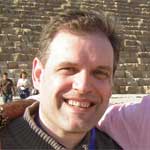

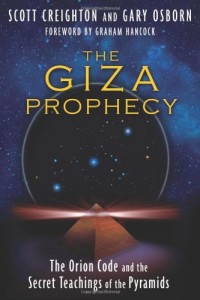
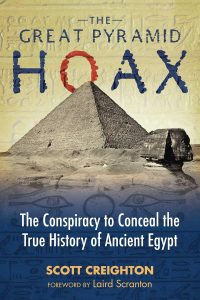

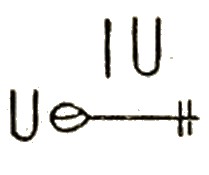
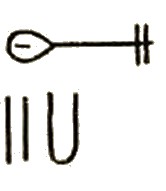
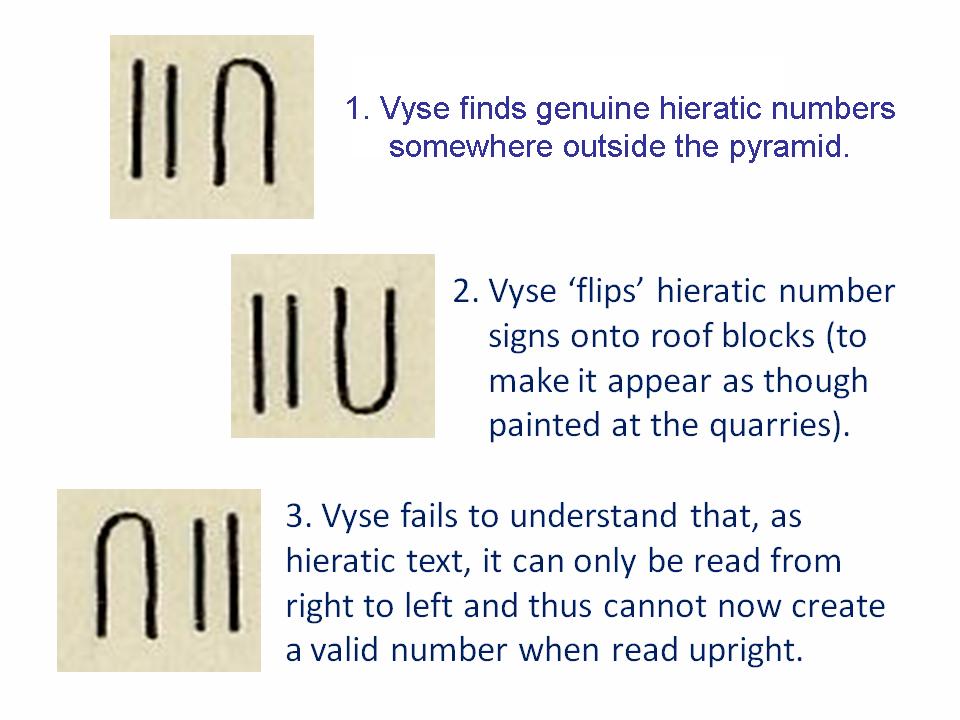

Great article and compelling detective work. I have believed Vyse to be a scoundrel, desperate to retain funding, for years. This article adds one more pin to that cushion. Unfortunately, science, most importantly Egyptology, is incapable of letting fact get in the way of a good yarn. Once they make a claim, no amount of evidence to the contrary will alter their view. That’s not science. That’s dogma.
Please forgive me but are you saying that the build of the pyramids is all fraud that the writing in side the chambers is false and not the aincent work if the egyptians
Hi Eva,
These painted ‘quarry marks’ represent the key piece of empirical evidence used by Egyptologists to help them determine the builder and age of the Great Pyramid. Since Egyptologists know that Khufu lived ca. 2550 BC then, by extension, this becomes the age of the pyramid since, according to Colonel Vyse, these painted marks (the various names of the pharaoh) were found within a sealed chamber. Colonel Vyse had to use gunpowder to blast his way into the chambers.
In my opinion, the extensive research I have undertaken shows that the painted marks Vyse claimed to have found in these chambers are fraudulent; a hoax. I present much evidence of this fraud here on GHMB and elsewhere. Naturally it is up to each individual to assess the evidence I present on their own terms and to draw their own conclusions from it.
That said, even if the marks are fraudulent as my research implies, this does not mean that Khufu did not build the Great Pyramid. All that my research does is remove or, at the very least, undermine the only hard, empirical evidence Egyptologists have to make this particular claim i.e. that the builder of the Great Pyramid was Khufu. Khufu may still have built the pyramid but the evidence long held by Egyptologists to support that view, the painted quarry marks ‘discovered’ by Vyse, is now much less credible; thus the views of Egyptologists on this particular issue are now much less certain.
SC
Wonderful. I just finished The Sign and the Seal and am hungry for more.
Egyptologists, scholars, and scientists, are human beings, and human beings have agendas, some hidden. If Vyse did perpetuate a hoax, what was his agenda, or his motive? At the time, Egypt was a fine place for one to make a name for themselves, with discoveries being made almost daily. Vyse was in Egypt to make a name for himself. His funding was running out. Voila! He became the discover of the evidence everyone was looking for! That Khufu built the Great Pyramid! And here we are, discussing Vyse’s “discovery” centuries late. The sad part is, that this debate, still hampers research into who the real builder was, and the true age of the pyramids, and many other structures on the Giza Plateau. Mark Lehner came to Egypt as an employee of Edgar Cayce’s organization, to look for evidence to back up Cayce’s visions. He stayed to become a conventional Egyptologist, to make a more acceptable name for himself. There is a lot of evidence that Egyptian history goes back much further than conventional scholars want to admit, and that it wasn’t founded by human beings!
On stone lithographs. I have made stone lithographs and I feel it relevant to flag up that A) one block makes many pictures over time. B) no carving is envolved in making a litho.
If the print was wrong it would not have been printed. I say this because, yes it’s long-winded and a waste. Cleaning the litho stone and then drawing the image, using gum and washing out. Then inking and proofing. When the block is ready the expensive bit of paper is used – not before! So I ask, is the litho print on expensive paper?
Hi SaM,
I have no idea about the paper–sorry. It was 1837 if that helps you?
Thank you for the info on creating lithographs–very useful. From what I see, in order for the the lithographer to create a positive print of the original artwork, they have to create an inverse image of the original on the stone. So, not only would the lithographer be copying an upside-down sign from the original artwork, they would have to create an inverse image of it onto the stone. Do I have that correct?
Thanks.
SC
Very interesting article. I also think it is important to separate what we know from what we think is a good guess or extrapolation. Sometimes the answer to these questions comes down to interpreting bits of information, as in this article. Thank you for making it all understandable and clear.
One thought: I realize we could “what if” forever. Still, it seems like another likely explanation could be that the workers just wrote the symbols incorrectly. They could be mistakes that weren’t corrected because everyone involved would know what they meant anyway. I would think the answer to that question would be simple. Is there some sort of analysis that could be done on the marks themselves to tell how old they are? Even a ball park figure would tell us whether they were new or old.
Anyway, thanks again.
It is certainly possible that the scribe marking the blocks made a mistake. I’m just not sure how likely that is? This was an important project (clearly) where clear understanding of counts, measurements and other numerical expressions could often be critical. Getting these numbers the wrong way around could have resulted in potential adverse consequences. But yes–that they perhaps made a mistake is one possible way to explain the numbers being written onto the blocks in the wrong order.
But a possible mistake by the workers most certainly can’t explain why Perring would copy a clear AE hieratic sign, upside-down from one of the stones and yet, by the time his colleague, Mr Hill, came to copy the very same symbol (hours, perhaps a day or two later in 1837), it had completely vanished from the block. Who removed it? And WHY did they remove it?
SC
Poppycock…….
Alas, “poppycock” is not an argument.
SC
Perhaps Jopn considered your poppycock unworth of an argument.
Anyone wishing to see a reasoned rebuttal need look no further than a board near here:
http://grahamhancock.com/phorum/read.php?1,1149177
The questions covered by this article were discussed in this thread http://grahamhancock.com/phorum/read.php?1,1149177,1149177#msg-1149177 on the board.
Thank you for posting that link–very helpful indeed for those wishing to learn more about this ongoing controversy.
The more people are informed of the subtle intricacies and nuances of this issue, the better. Indeed, I would encourage you also to perhaps place a link or two on your HoM web site as that would also help spread awareness about this issue to your own HoM readership. The more that folks are made aware of and discussing this matter the better. IMO, with their actions at Giza in 1837, these men cheated all of us of our true history and, as far as I am concerned, everyone needs to be made aware of exactly what they did.
Again, thank you.
SC
It is very interesting to find a new something in the Great Pyramid!
but, do you know what is the three big pyramyds as a calendar for ever?
I think you will change your theory of Giza!
I have been working on Egypt and Giza for the past 8-9 years. Based on my research I have concluded some new and interesting facts that will make the real purpose of the existence of the pyramids clear.
– Draw a line from the apex of Khefren to the east. The 28 degrees to the North is the Khufu’s corner, the 28 degrees to the South is the corner of Khentkawes. (egypt legon with cotangens will make the 28 degrees!)
– There is two poitnts of the Khufu’s east level where shadow of the Hetepheres (the pyramid’s side,and the small windows)
in the morning will stands for more than one week. After the standing it starts to go to the 2 x 182 days fror ever!
– Menkaure with the 3 small pyramids shows the real way of the Moon’s 4 x 7,4 days for ever! This is also very useful for the women to determine their menstrual cycle as it is also a 28 day cycle.
the film about it:
This week I have put a film about Giza, and the time of Giza on youtube in English. I believe it should be interesting for You and for Your readers as well.
Giza Site Plan Sun Moon Gőczey András – YouTube▶ 23:52https://www.youtube.com/watch?v=9EGF381_WDI
2018. máj. 17. – Feltöltötte: ntvbt
Giza Site Plan Sun Moon Gőczey András. ntvbt. Loading… Unsubscribe from ntvbt? Cancel Unsubscribe …
I would greatly appreciate if you would take time to watch the 23 minute long film and perchance reflect on it.
Gőczey András architect from Budapest
http://grahamhancock.com/phorum/search.php?1,search=poppycock,author=scott+creighton,page=1,match_type=ALL,match_dates=0,match_forum=ALL,match_threads=0